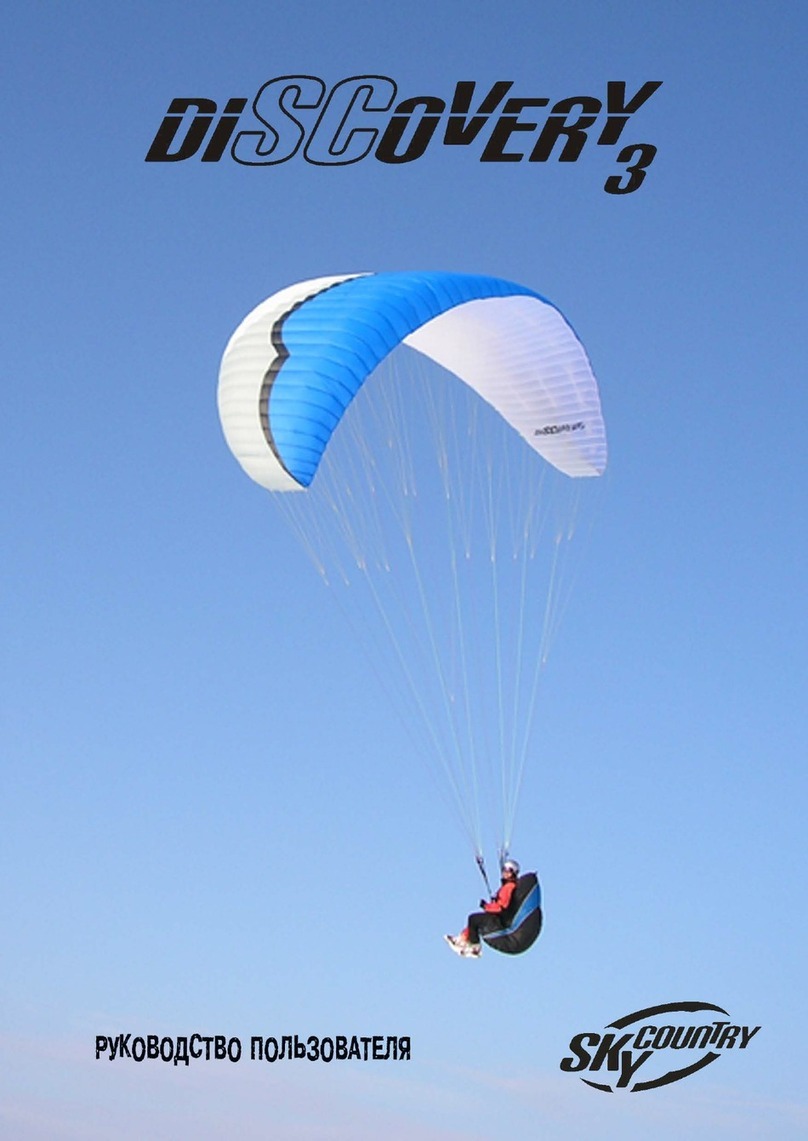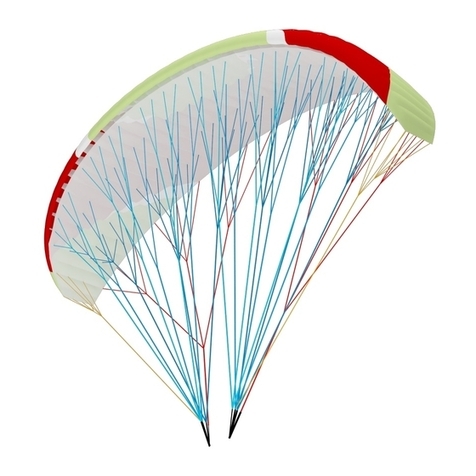
Flying in turbulence
You can help your glider to avoid different collapses in turbulence – you must y
actively for it. When the glider pitches forward – use the brakes to slow it, if it goes
back – release brakes. These movements can be symmetric or asymmetric.
Let us remind you once again that you should be very careful choosing the weather
to y.
Descent Techniques
Big Ears
While holding the brakes you should symmetrically pull the outer А-lines(A’). For
directional control of the glider use the weight shift. When you do big ears, the hori-
zontal speed increases slightly. In order to return to normal ight, you should re-
lease the A-lines and pull the brakes a few times.
Spiraling is not permitted with big ears, because of the increased load on the re-
maining lines so that they can be physically deformed.
В-stall
When you need to lose height quickly because of the sudden worsening of the
weather, risk of entering a cloud, etc, we recommend you B-stall.
Holding the brakes you take В-risers near the connectors. Forcefully but not sud-
denly, pull down the risers 25-30 cm and hold them as long as necessary. The wing
gets a fold along the entire B-row and sinks at a rate of 8-10 m/sec. In order to return
to normal ight simply release the В-risers and your Scorpion-3 will get out of the
B-stall with a small front dive. You can use the brakes once the horizontal speed is
gained. Scorpion-3 does not normally tend to go into deep stall once the B-risers are
released. If this does happen (possibly for bad adjustment or under-loading), you
should either pull the А-risers or swing the wing with the brakes.
Spiral dive
When you hold either brake down for a long time, the glider goes into a fast sharp
turn and loses a lot of height. The rotation axis can be somewhere between the pilot
and the wing. The sink rate could be more than 15 m/sec. To get out of the spiral dive
you must release the inner brake. If the glider stays in deep spiral, pull the outer
brake slightly to exit the maneuver. Do not pull the outer brake strong and fast – it
may cause very dynamic exit.
While spiral diving, the pilot experiences considerable overload up to 3 – 4g, so you
can lose orientation. That is why we recommend spiral diving only when the sink
rate of the В-stall is not enough.


































